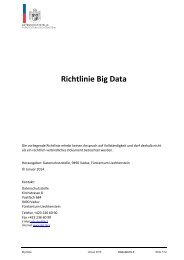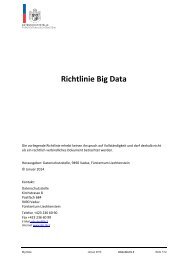Apple iOS Security Guide
You also want an ePaper? Increase the reach of your titles
YUMPU automatically turns print PDFs into web optimized ePapers that Google loves.
App <strong>Security</strong><br />
Apps are among the most critical elements of a modern mobile security architecture.<br />
While apps provide amazing productivity benefits for users, they also have the potential<br />
to negatively impact system security, stability, and user data if they’re not handled<br />
properly.<br />
Because of this, <strong>iOS</strong> provides layers of protection to ensure that apps are signed and<br />
verified, and are sandboxed to protect user data. These elements provide a stable, secure<br />
platform for apps, enabling thousands of developers to deliver hundreds of thousands<br />
of apps on <strong>iOS</strong> without impacting system integrity. And users can access these apps <br />
on their <strong>iOS</strong> devices without undue fear of viruses, malware, or unauthorized attacks.<br />
App code signing<br />
Once the <strong>iOS</strong> kernel has started, it controls which user processes and apps can be run. <br />
To ensure that all apps come from a known and approved source and have not been<br />
tampered with, <strong>iOS</strong> requires that all executable code be signed using an <strong>Apple</strong>-issued<br />
certificate. Apps provided with the device, like Mail and Safari, are signed by <strong>Apple</strong>.<br />
Third-party apps must also be validated and signed using an <strong>Apple</strong>-issued certificate.<br />
Mandatory code signing extends the concept of chain of trust from the OS to apps, <br />
and prevents third-party apps from loading unsigned code resources or using selfmodifying<br />
code.<br />
In order to develop and install apps on <strong>iOS</strong> devices, developers must register with <strong>Apple</strong><br />
and join the <strong>iOS</strong> Developer Program. The real-world identity of each developer, whether<br />
an individual or a business, is verified by <strong>Apple</strong> before their certificate is issued. This<br />
certificate enables developers to sign apps and submit them to the App Store for<br />
distribution. As a result, all apps in the App Store have been submitted by an identifiable<br />
person or organization, serving as a deterrent to the creation of malicious apps. They <br />
have also been reviewed by <strong>Apple</strong> to ensure they operate as described and don’t contain<br />
obvious bugs or other problems. In addition to the technology already discussed, this<br />
curation process gives customers confidence in the quality of the apps they buy.<br />
<strong>iOS</strong> 8 allows developers to embed frameworks inside of their apps, which can be used<br />
by the app itself or by extensions embedded within the app. To protect the system and<br />
other apps from loading third-party code inside of their address space, the system will<br />
perform a code signature validation of all the dynamic libraries that a process links<br />
against at launch time. This verification is accomplished through the team identifier<br />
(Team ID), which is extracted from an <strong>Apple</strong>-issued certificate. A team identifier is a <br />
10-character alphanumeric string; for example, 1A2B3C4D5F. A program may link against<br />
any platform library that ships with the system or any library with the same team<br />
identifier in its code signature as the main executable. Since the executables shipping <br />
as part of the system don't have a team identifier, they can only link against libraries <br />
that ship with the system itself. <br />
<strong>iOS</strong> <strong>Security</strong>—White Paper | October 2014 16











